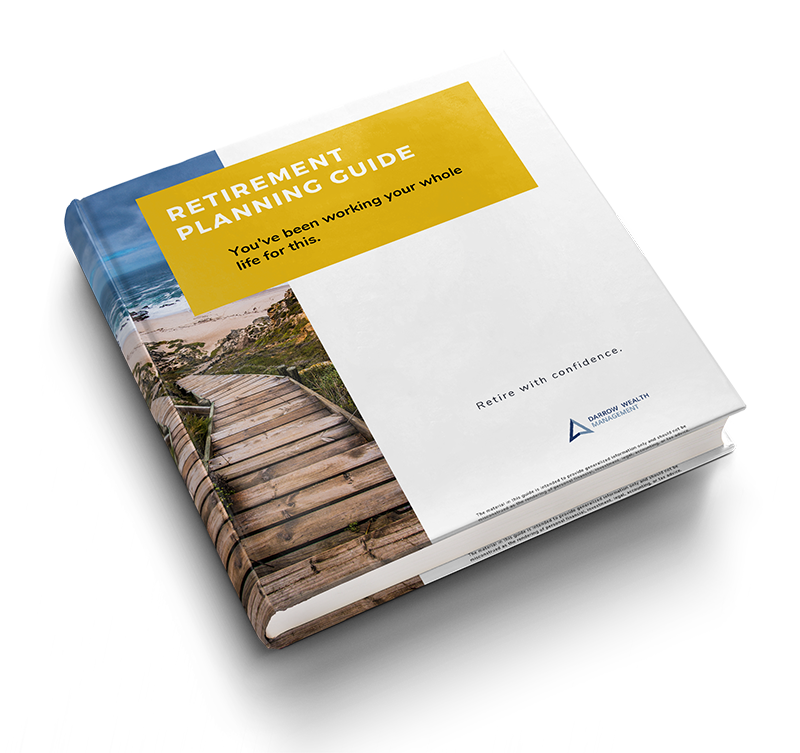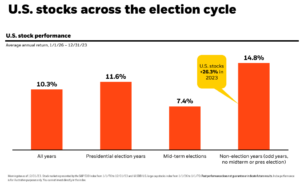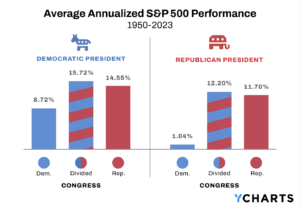Ways to get the most out of employer 401(k) matching contributions
Employers can choose to match their employee’s 401(k) contributions in several ways, should they wish to do so at all. Though it may seem cumbersome to spend too much time on the math, particularly when income and 401(k) contribution limits may change each year, it might be worth it. Especially for high earners, front-loading your annual 401(k) contributions could mean leaving money on the table.
How does the 401(k) match formula work?
Formulas will vary from company to company. Common matching formulas are 50% of contributions up to 6% of salary or 100% of contributions up to 3% or 4% of salary, but many different methods can be used.
In most arrangements, employer 401(k) matching contributions are made each payroll period, based on the employee’s earnings and savings rate in that pay period.
For example, if Devon’s salary is $100,000 per year and he’s paid monthly, his gross income is $8,333 each pay period. If he elects a 12% 401(k) contribution, every month he saves $1,000. His company offers a 50% match up to 6% of compensation. The employer’s match is calculated as the lesser of:
- 50% of the employee’s contribution that pay period, or
- 3% of the employee’s gross pay that pay period (e.g. 50% of compensation up to 6% of gross pay)
In Devon’s situation, he receives an employer match of $250/month ($8,333 * 6% * 50%). If Devon contributed 4% of his pay instead, his match would be reduced to $167/month, the equivalent of 2% of his gross pay.
401(k) match mistakes
There are several common pitfalls that prevent employees from making the most of their employer’s matching rules.
Front-loading 401(k) contributions
There are several situations which may lead investors to over-contribute to a 401(k) early in the year: if retirement contributions are made on bonus income, not modifying your savings rate after a big raise, high-earning individuals with enough cash flow to knock out their retirement contributions.
Here’s an example:
Mekae, age 35, earns a salary of $200,000 per year, or $16,667 each monthly pay period. In 2019, the maximum an individual can contribute to a 401(k) plan is $19,000 if under age 50. Mekae defers 15% of his pay and his employer matches 50% of contributions up to 6%.
Due to his salary and high contribution rate, Mekae reaches the $19,000 annual additions limit in August. As a result, he misses out on $2,000 in 401(k) matching contributions he would have received if he spread the deferrals throughout the year.
Only maxing out the match
The concept of ‘free money’ isn’t lost on most of us. Though it’s smart to make sure you don’t leave money on the table, it’s also important to make sure you’re saving enough for retirement, and that almost always begins with maxing out contributions to a retirement plan at work.
Rather than skip to looking for ways to invest extra savings with your take-home pay, most investors would be best suited to first max out their 401(k) or 403(b) contributions ($19,000 in 2019). If you elect pre-tax 401(k) deferrals, increasing your annual additions won’t result in a dollar-for-dollar reduction of your net pay. Why?
Tax withholding (e.g. federal, state, FICA) is based on your taxable income. Pre-tax contributions reduce your taxable income dollar-for-dollar which means fewer dollars are taxed. In addition to paying less tax overall, reducing your taxable income helps prevent taxpayers from phasing out of certain tax deductions and credits or entering a higher marginal tax bracket. Here’s a calculator to estimate how increasing 401(k) contributions may impact your bottom line.
Special 401(k) matching situations
As previously discussed, employers have a lot of freedom to determine how to apply matching funds, if they choose to do so at all. This can lead to some unique situations employees should be aware of.
- True up provision. A true up provision helps ensure employees get the full benefit of the company match even if you maxed out your yearly additions too early or switched from a contribution rate below the matching threshold to one equal to or above it later in the year.
- Safe harbor contributions. Though companies have some latitude in deciding how they wish to help employees save for retirement, they must do so within the confines of IRS and ERISA rules and limitations to ensure the plan isn’t skewing benefits in favor of “highly compensated employees” (HCEs). Plans that fail nondiscrimination testing may be subject to penalties, and HCEs may face new contribution limits, below the stated IRS limits. Safe harbor provisions eliminate the compliance requirements for nondiscrimination through mandatory or matching funds that vest immediately.
- Matching on catch-up contributions for individuals age 50 and older. In 2019, employees over 50 can contribute an additional $6,000/year to a 401(k) or 403(b) plan. Though employers can match the additional funds provided total annual additions are within the limits, most don’t.
- Vesting schedules. Keep in mind that most non-safe harbor plans require employees to earn their matching contributions over time (individual deferrals are always fully vested). If you don’t plan to stay at your company long enough to fully vest, consider only using your vested balance in retirement planning projections.
Dollar cost averaging: a best practice for 401(k) funding
Aside from helping ensure you make the most of your company’s matching policies, spreading your retirement contributions throughout the year can also help improve your returns. The concept is quite simple: when the market is up, the price of a share has also increased, meaning you can purchase fewer shares with your periodic contribution. When the market is down, the same dollar amount can buy more shares.
When investors front-load 401(k) contributions in the first or second quarter, they may miss the opportunity if the market later experiences volatility and stocks go on ‘sale.’ Since it is impossible to perfectly time the market with any regularity to always buy low and sell high, dollar cost averaging helps neutralize the impact of timing and market volatility on new 401(k) contributions.
As with many things in life, in retirement planning it’s important to focus on the things you can control. That includes making sure your 401(k) is set up property to fully benefit from matching funds, IRS deferral limits, and neutralizing volatility through dollar cost averaging.
This article was written by Darrow advisor Kristin McKenna, CFP® and originally published by Forbes.










